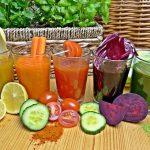There are a range of health issues that are specific to women, such as those relating to estrogen production, mental health, sexual health and fertility. As women age, their bodies go through major changes in their reproductive systems which can cause big changes in their mental and physical states.
By eating a nutritious diet, regularly getting medical screenings, and staying active, women can take control of their health.
Facts About Women’s Health
The human female body changes a lot throughout the course of a lifetime, resulting in different health concerns at different ages. During periods of physiological change, women are more vulnerable to mental health issues such as depression, anxiety and eating disorders.
When people become adults, topics related to sexual health such as fertility, avoiding sexually transmitted diseases, and using safe methods of birth control become more important. Some women experience health conditions caused by changes in hormone levels after menopause.
Good news – most diseases that target women are treatable if caught early. By following some easy health tips, women can live long and prosperous lives.
- Major risks to women’s health include cardiovascular disease, cancer, osteoporosis and depression.
- Women are more likely than men to be diagnosed with stress and depression.
- STDs, reproductive issues and birth control methods affect women’s sexual health.
- Osteoarthritis, the leading cause of disability in the U.S., affects more women than men.
- Women are more than twice as likely as men to have a UTI.
Purium’s Women’s Defense is a supplement blended from herbs and whole foods specifically chosen to enhance a woman’s health. Prevention is everything!
-
May help increase energy, vitality, and endurance
-
Supports healthy immune function
-
May support healthy blood glucose levels
Women’s Defense is uniquely formulated to naturally assist the built-in defenses of a woman’s body to keep it strong.
Common Diseases and Conditions
While both sexes are affected by a variety of conditions and diseases, the way these diseases present themselves and the age at which they typically appear differs between men and women. There are also many diseases that specifically affect women.
High blood pressure causes a variety of health problems.
Women historically have had a lower incidence of high blood pressure than men, but this begins to equalize around middle-age. After age 65, women have a higher risk for high blood pressure. Additionally, many women who have normal blood pressure develop high blood pressure after menopause.
Metabolic syndrome is a condition that is more common in women than in men.
Metabolic syndrome is a collection of risk factors that increase the chance of developing cardiovascular disease and type 2 diabetes. Metabolic syndrome is a cluster of conditions — increased blood pressure, high blood sugar, excess body fat around the waist, and abnormal cholesterol levels — that occur together, and women with metabolic syndrome are at a higher risk for heart attack and stroke.
Lupus is an autoimmune disease that affects more women than men.
Lupus patients are more susceptible to developing cancer and infections, which ultimately leads to a higher mortality rate.
Women are more likely than men to experience a urinary tract infection, or UTI.
This is especially true for women older than 60. UTIs can cause you to have to urinate more often than usual, as well as a burning feeling when you do.
If it is not treated, it can spread to the kidneys and cause sepsis. Sepsis is when the body has an infection and sometimes it can be deadly.
Cardiovascular Disease
Approximately one-third of all female deaths every year are caused by cardiovascular disease, which is the leading cause of death for women. Although it is often overlooked by women, it is a disease that was once though to only affect men.
Cardiovascular disease can cause heart attacks, heart valve problems, strokes and arrhythmias.
Heart disease is a type of cardiovascular disease. Although women are more likely to experience heart disease later in life than men, about 42 percent of women who have a heart attack die within a year.
Only 24 percent of men die within a year of a heart attack, which is comparatively lower than other heart-related statistics. About 25 percent of all female deaths are caused by heart disease. Approximately 64% of women who die from heart disease never reported any symptoms.
Cancer
Cancer is responsible for the death of more than a quarter of a million women in the United States every year. The most common types of cancer that affect women are skin cancer, breast cancer, lung cancer and colorectal cancer.
Approximately 12 percent of American women will develop breast cancer at some point in their lives. However, the survival rate for breast cancer is relatively high when the cancer is detected in its early stages. Cervical cancer is the second-highest cause of cancerous death among women, accounting for about 40,000 female deaths per year.
Approximately 70,000 women die from lung cancer in the U.S. each year, making it the leading cause of cancer-related death among women. In 1987, it became the leading cause of cancerous death in women, surpassing breast cancer. It is almost always caused by smoking cigarettes.
Osteoporosis
A disease that causes bones to weaken, osteoporosis affects millions of people. Older women are the most affected by this, causing their bones to break more easily. People with osteoporosis are more likely to have fractures or breaks in their hips, spines, or wrists.
- The elderly
- Smaller, thinner women
- Asian and white women
- Those with a family history of osteoporosis
- Those with anorexia nervosa
- Those with low calcium and vitamin D diets
- People who consume excess alcohol
- People who smoke
Depression
More women than men experience depression. Depression has a big impact on a woman’s life, preventing her from being able to function properly and feel happy. This leads to more women than men trying to kill themselves each year.
There are a number of factors that can contribute to someone becoming depressed, including things like their genes and hormones, as well as things like stress. When women’s hormones change, their brain chemistry also changes. Several times throughout a woman’s life, she may experience depression. Some of these times include during puberty, after having a baby, and during or after menopause.
If you’re a woman and you’ve been feeling sad for more than two weeks, it’s a good idea to talk to a doctor or therapist. Take Health Surgeon’s depression quiz!
Depression can be treated in many ways, some of which include therapy and medication. Many antidepressants have severe side effects, so you should consider the risks before taking them.
Eating Disorders
The majority of those diagnosed with eating disorders are women. The vast majority of people with anorexia or bulimia are women. Take Health Surgeon’s eating disorder quiz!
Eating disorders are mental and physical illnesses. There are a number of factors that can contribute to the development of an eating disorder, including culture, family history, and stress levels. Additionally, some people may be more genetically susceptible to developing an eating disorder.
Anorexia Nervosa
People with anorexia have a fear of gaining weight. They rigorously limit the amount of food they eat. Anorexics often do not eat to help with their anxiety, anger, and tension. People with anorexia often feel like they are overweight, even if they are actually below a normal weight.
Bulimia Nervosa
People with bulimia also fear gaining weight. However, they often eat large amounts of food in a short period of time before attempting to rid their body of food by throwing up or taking laxatives. Bulimics often feel they can’t control their food intake. Unlike anorexics, they may have a normal body weight.
Foods that Help Boost Energy and Productivity Levels
Most women’s health issues can be addressed with a nutrient-rich diet:
Iron-Rich Foods
Iron is crucial for women’s health. Because they lose blood during menstruation, women need twice as much iron as men. While men need around 19 mg of iron daily, women need approximately 30 mg of iron daily. This number increases to 40 mg if the woman is pregnant.
However, this quantity varies with age for women. During pregnancy, the body needs more iron, and after menopause, the body needs less iron. To improve iron absorption, include foods rich in vitamin C along with iron-containing foods in your diet.
Folate or Folic Acid During the Reproductive Years
Pregnancy is the most crucial phase of women’s health. Folic acid is especially important for the developing baby to avoid congenital disabilities and aid in proper brain and nervous system development.
For women who are not pregnant the recommended daily intake of folate is 220 micrograms. This figure doubles during pregnancy to 400 micrograms. This quantity increases to 1000mcg per day for twin pregnancy.
Women who are not pregnant and have not been tested for a deficiency should eat foods that contain enough folate, such as broccoli, chickpeas, green leafy vegetables, and cabbage. You should check with your doctor before taking any supplements.
Daily Calcium and Vitamin D Requirements
Calcium deficiency is prevalent among women post-mid-age. To reduce the risk of osteoporosis and other calcium-related issues, women need to increase their calcium intake during menopause.
During menopause, bones thin faster for women due to a decline in estrogen hormone. Additionally, hypoparathyroidism may also arise from calcium deficiency.
Including calcium-rich foods like low-fat milk, yogurt, and cottage cheese in your diet is essential for healthy teeth and bones. Furthermore, eating sardines regularly can also help improve your overall health. Vitamin D is important for helping the body absorb calcium.
Both vitamin A and D are needed together, and sources of vitamin D include fatty fish, such as salmon, eggs, milk, and the like.
Factors that Boost Women’s Health
We have discussed the difference in nutritional needs of men and women. Here are some tips for women to achieve their ideal diet goals in the simplest ways.
To avoid over-eating, start by measuring the servings of each dish and estimate the calories from there. This will take the guesswork out of calorie counting and help you keep track of your intake more easily. Eating smaller portions is the easiest way to avoid overeating.
Additionally, have meals in smaller plates and bowls. According to experts, a lot of the food that people eat for seconds is for psychological reasons. Switching to smaller plates can help satisfy the desire for seconds without consuming additional calories.
Listen to your satiety cues to know when you’re full. Keep healthy snacks on hand so you’re not tempted to eat unhealthy options.
On the other hand, eating in response to stress or emotions is a common occurrence for women, especially around the time of their menstrual cycle. Avoid eating an entire pint of ice cream in one sitting, even if it is your favorite flavor.
A healthy diet is important for many reasons. It can help you maintain a healthy weight, have more energy, and avoid diseases. Eating several small meals throughout the day can help you maintain your energy levels and prevent you from becoming too hungry.
If you prepare breakfast the night before, you will have no excuse to leave for work without it.
If you don’t eat breakfast, you’re more likely to buy snacks or high-calorie meals from the vending machine or cafeteria. Start each day with a nutritious breakfast.
One of the unhealthiest things you can do to your body is skipping meals. It may look like an easy way to save some calories, but it will have negative consequences for your health in the long run. When your metabolism slows down, you are more likely to gain weight. This also makes it harder to lose weight.
If you want to avoid overeating, make sure you get enough sleep. Tiredness and fatigue can lead to overeating. Eight hours of sleep is vital to rejuvenate. Setting a sleep routine is important for getting a good night’s sleep. This means fixing your sleep as well as wake up timings. It helps to keep the body’s internal clock working properly.
Being active every day is crucial for women’s health, and it doesn’t have to be complicated. Something as simple as going for a walk can make a big difference. It takes some time to get used to, but you can eventually set a goal for yourself of 10,000 steps a day.
Exercising is a fantastic de-stressor. Being physically active has numerous benefits that include improving your heart health, building bone density and muscle strength, and reducing your risk of developing health issues like high blood pressure and obesity.
If you want to improve your health, it’s important to reducing your stress levels. Having too much stress can have negative impacts on your health, so it’s important to find ways to relax and de-stress. There are many ways to deal with stress that can be beneficial, like deep breathing, meditation, yoga, massage, or talking to a professional counsellor.
Top Foods for Women’s Health
1. Whole Grains and Cereals
Whole grains contain all of the essential nutrients that are found in the grain kernel. These nutrients are lost when the grain is refined. Whole grain contains bran and fiber which help to regulate the conversion of starch into glucose, keeping blood sugar levels stable.
Fiber in wholegrains can help to lower cholesterol and improve digestive function by promoting regularity and waste removal. Whole grains contain complex carbohydrates which can help to keep your weight under control. A healthier diet can be achieved by including a portion of jowar, ragi, oats, bajra in your meals.
2. Milk and Curd
Both milk and curd are sources of calcium, which is necessary for your bone health. Curd helps with gut health and proper digestion. They also help regulate blood pressure by containing potassium and magnesium.
3. Nuts
Almonds and walnuts are high in omega-3 fatty acids. Nuts are a good source of unsaturated fats, which can help to improve your cholesterol levels. Eating nuts in place of meat can help to lower LDL cholesterol levels.
4. Berries
Berries are a type of superfood that contains a low amount of calories, but are rich in nutrients like antioxidants, folic acid, and vitamin C.
All types of berries have anti-cancer properties and improve heart health. They do this by lowering cholesterol and blood pressure while reducing oxidative stress. They also help to keep your skin free of wrinkles and give you a more youthful appearance.
5. Fatty Fish
The health benefits of fatty fish like mackerel, herring, and wild salmon are due to their high content of omega-3s and vitamin D. Omega-3s are important for brain health and growth in infants during pregnancy, so they are a vital nutrient for expectant mothers.
6. Tomatoes
Tomatoes are full of the antioxidant lycopene, which can help improve your immune system, protect your eyes from damage caused by light, and may also help reduce your risk of breast cancer and heart disease. The avocado is also a good source of folate, Vitamin C, potassium, and vitamin K.
7. Green Vegetables
You can never go wrong with this one. Green vegetables like spinach are rich in folate, which helps improve fertility in women.
These are also rich in fiber and beta carotenoids. Green leafy vegetables help to improve memory. Diets that are good for the heart may also be good for the brain.
8. Beans and Legumes
Beans are a great source of protein and fiber, without the saturated fat that is found in animal proteins. Eating beans curbs your appetite by making you feel fuller for a longer period of time and helps you resist unhealthy snacks.









